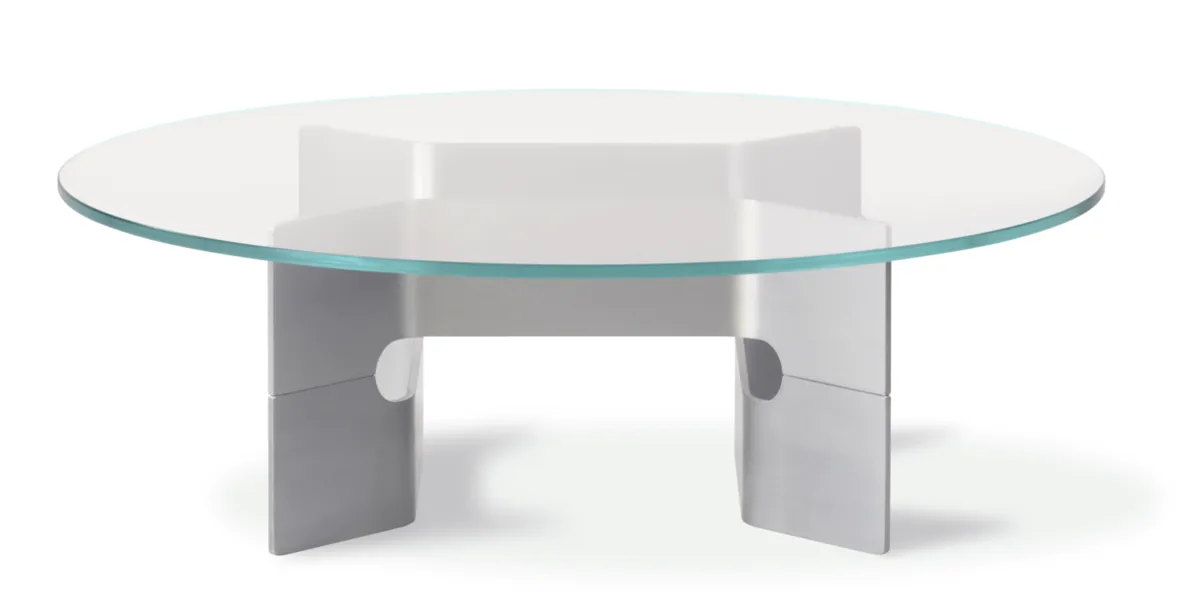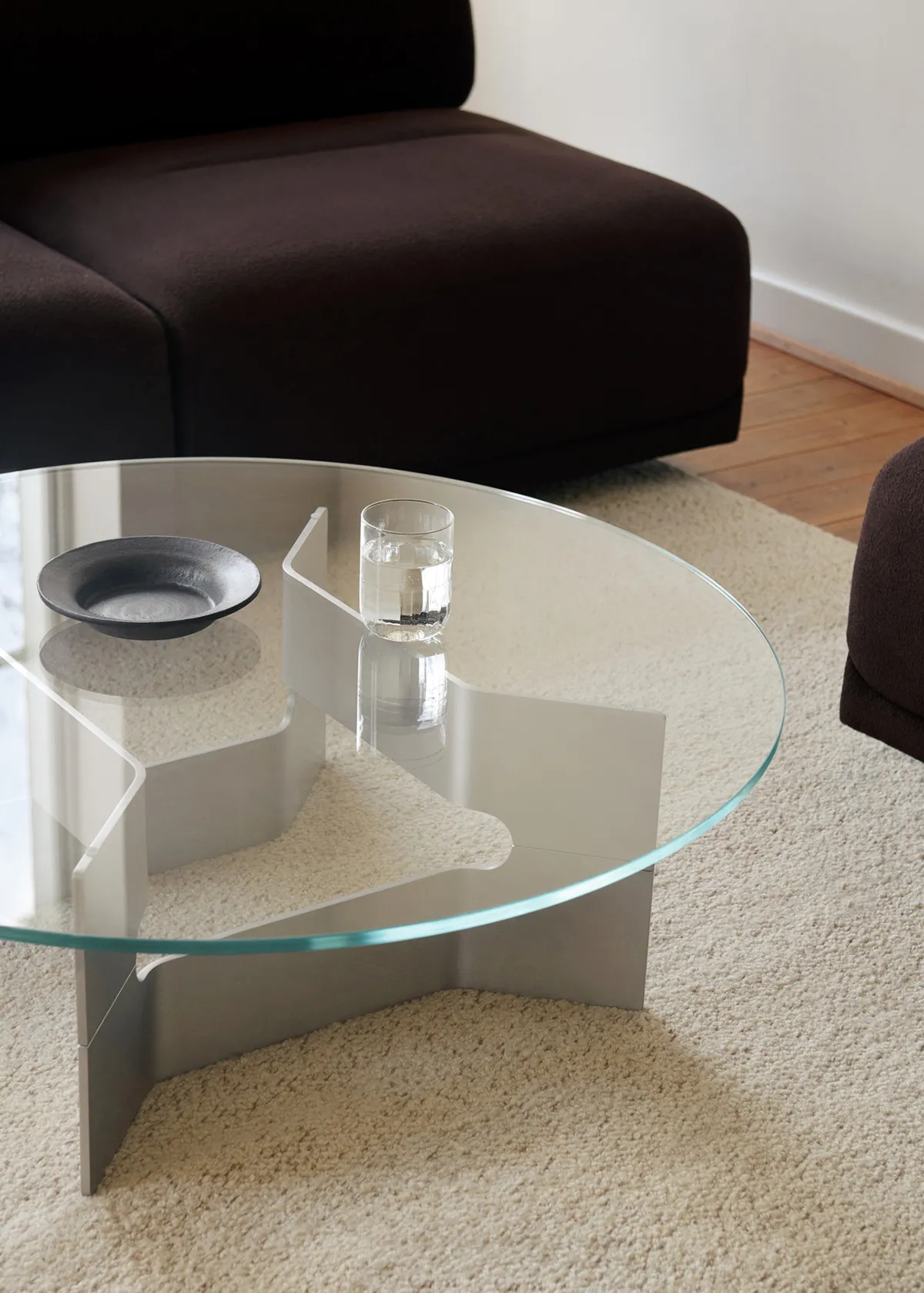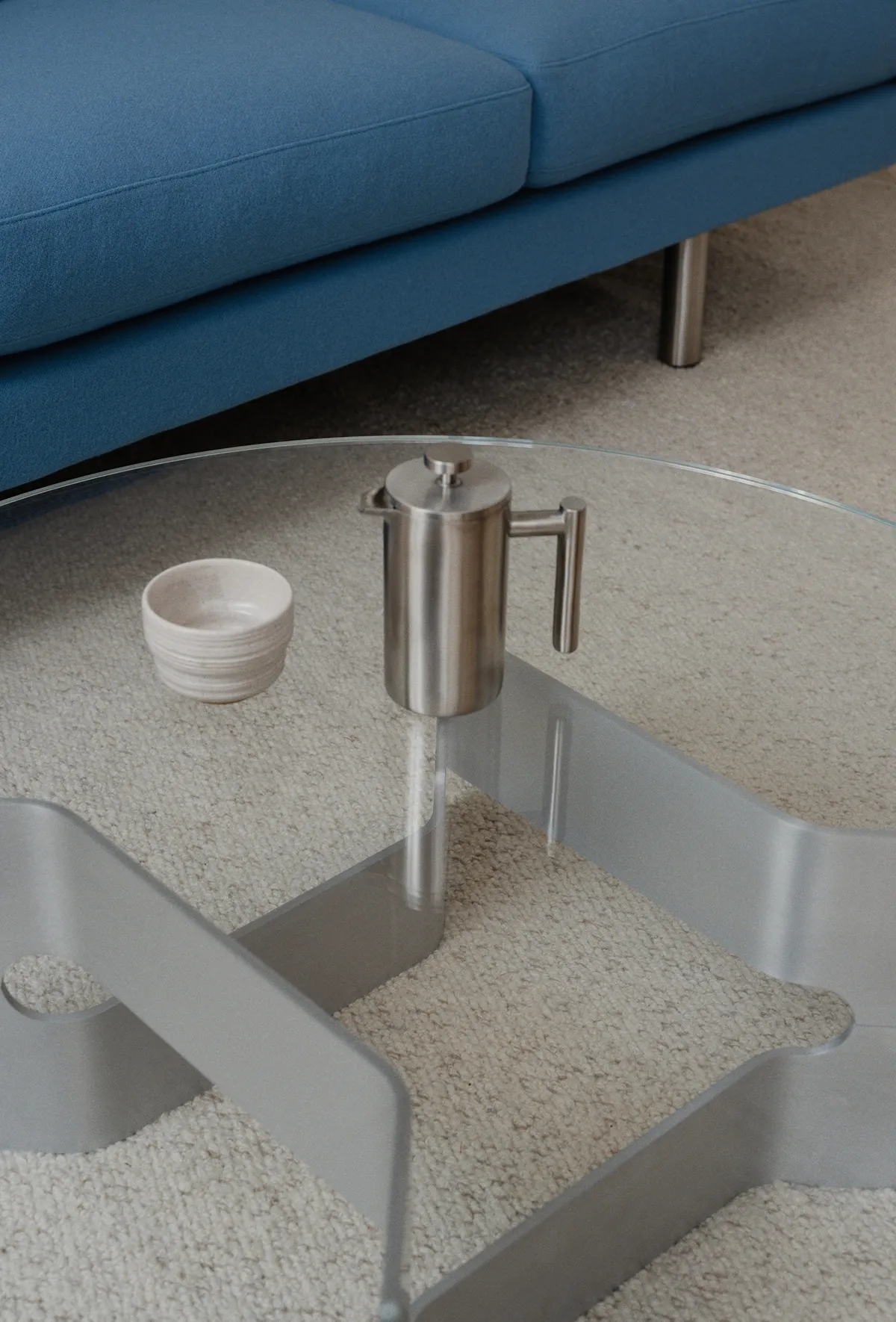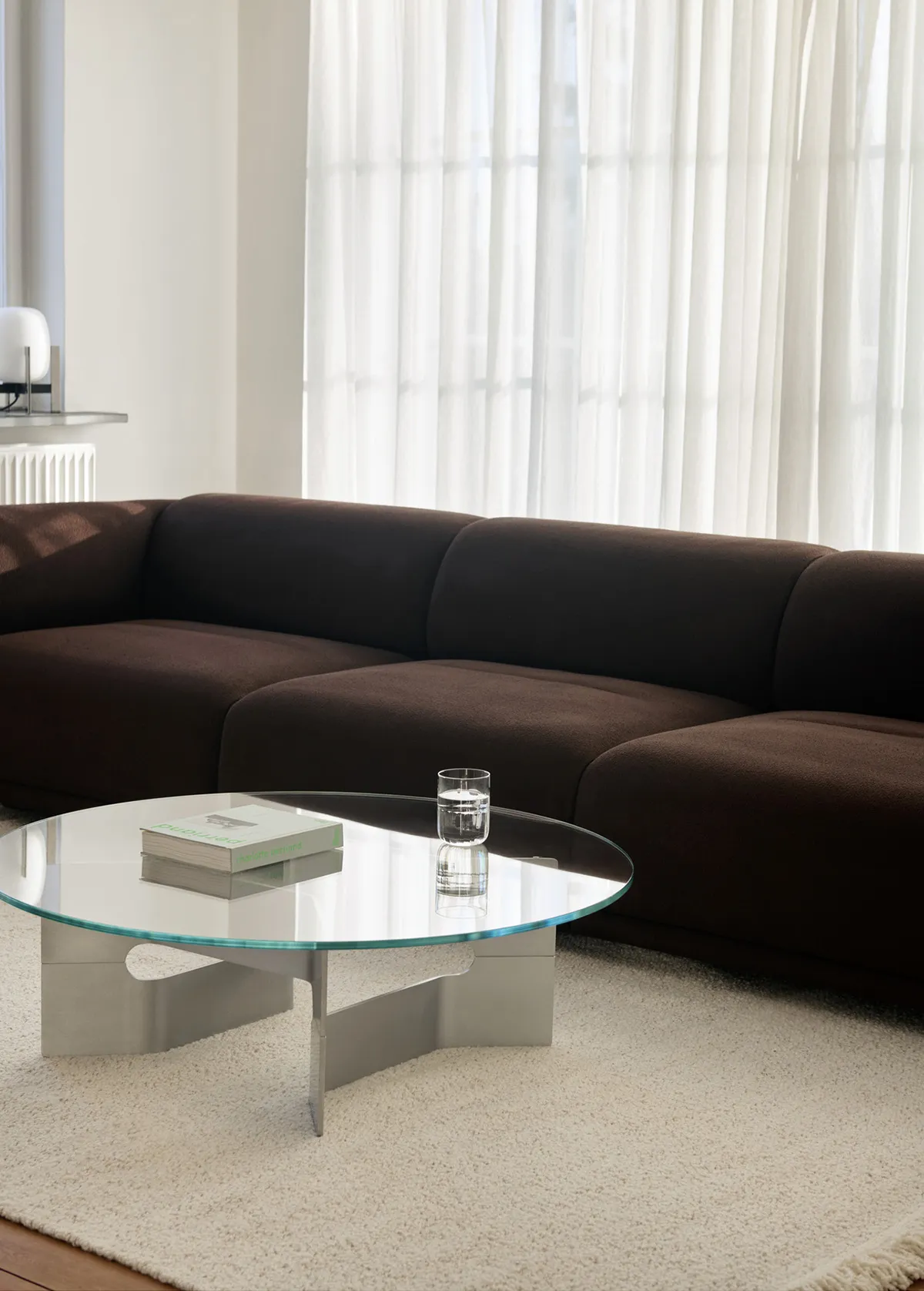The family-owned design brand relaunches yet another remarkable piece by designer and professor Jørgen Gammelgaard – the missing link in Danish design. Commenced in 1962 and introduced in 1973, the designer spent over a decade perfecting this elegant low table in glass, featuring a sculptural yet simple look that showcases his eminent sense of minimalist design.
While much has been written about the Danish Modern movement, what followed in the 1970s and 1980s marked an era of industrial aesthetics that paved the way for simplified shapes and distinctive ideas that appealed to the mass market. In the interim between Danish Modern and the renaissance of Scandinavian design, Jørgen Gammelgaard honed his craft and began making a name for himself, becoming part of a movement that embraced simplified shapes and production methods, allowing for independent ideas with more character.

A refreshing take on minimalism
Gammelgaard’s award-winning work reflects a simple, refined approach to design and a refreshing take on minimalism. His designs stand out as timeless classics that remain relevant today. Each is an inventive design for modern living, reflecting his measured sense of minimalism. This is evident in the JG Coffee Table, a new heritage design crafted in Denmark made of brushed bent aluminium and tempered glass coming together as an interesting sculpture. After its launch in 1973, the coffee table was available for only a few years. Now, Fredericia has brought it out of the archives, breathing new life into this magnificent piece of furniture, able to add a luxurious feel to any space.
The absence of the traditional four legs means that the JG Coffee Table establishes a solid, anchored presence in the interior despite its entirely airy appearance. The transparent glass tabletop highlights the base’s interesting and logical construction in the design, creating a contrasting effect between light and solid, that changes according to the viewer’s point of view, bringing the design to life.
 Bridging the gap between mid-century and modern industrial design
Bridging the gap between mid-century and modern industrial design
Jørgen Gammelgaard (1938-1991) belongs to a generation of highly skilled designers who all learned their craft in the time-honoured Danish tradition of apprenticeships. Originally trained as a cabinetmaker with the well-known master Copenhagen carpenter AJ Iversen, Gammelgaard worked under the wing of Grete Jalk. After studying furniture design under Poul Kjærholm at the Royal Danish Academy of Fine Arts, particularly influenced by his minimalist design doctrine, Gammelgaard went on to work at Arne Jacobsen’s studio in the late 1960s. In 1971, when Børge Mogensen and Fredericia’s CEO Andreas Graversen received the Danish Furniture Prize for their contribution to the Danish furniture industry, the same award was given to Gammelgaard as an upcoming talent who would shape the future of Danish design.
At 49, he was appointed Professor of Furniture Design at the Royal Danish Academy of Fine Arts’ Department of Furniture and Spatial Art, a post he held from 1987 until his death in 1991. Bridging the design generations and carrying on the legacy, he inspired many of his students with his insights into the Danish design tradition. Many later became names in their own rights, such as Johannes Foersom, Peter Hiorth-Lorenzen, Morten Ernst and Anne-Mette Bartholin Jensen.
As part of the ever-expanding portfolio encompassing Denmark’s rich design heritage, Fredericia proudly represent Gammelgaard’s most significant works. Besides the JG Coffee Table, the company has also reissued the JG Table, the JG Sofa and the award-winning JG Folding Stool in 2022.



